With retail shelves brimming with products promising plumper lips, fewer wrinkles, and flawless skin, the global health, beauty, and wellness market is on track to reach an estimated seven trillion dollars. And beauty consumers are not holding back. Consumers worldwide are scouring retail and digital shelves to find legacy brands and start-ups. Everything has changed, from beauty products to how they are marketed to even the end user.
Wellness and self-care are at centre stage, and the beauty and personal care industry is experiencing a profound shift towards sustainability, ethical sourcing, and self-care rituals that help destress. These shifts reflect a broader cultural movement where individuals prioritise external beauty and inner well-being. With a conscious investment in self-care, consumers seek products that facilitate a deeper connection with themselves, marking a transformative shift in the industry.
While beauty consumer is ready to open their wallets to look and feel good, they all have unique values and behaviours. So, how do beauty brands target their consumers?
The good news is with the growth of digital media, targeting the right people is easier than ever —but to do that effectively, brands need to understand different brand personas clearly.
How Beauty Personas Help Brands Understand What Their Customers Want
A consumer persona is a detailed profile representing a specific segment of a brand’s target audience. It embodies demographic information, behavioural characteristics, motivations, and pain points, giving brands a vivid depiction of their customers and their desires.
When beauty brands understand and craft these detailed personas, they can better align their product offerings with the unique needs of each consumer segment, providing personalised solutions that resonate more profoundly with their target audience.
Understanding consumer behaviour, buying habits, and preferences is key to staying competitive in the ever-evolving beauty industry. Different types of buyers each come with their unique expectations, wants, and needs. In this post, we will uncover the personas of eight distinct types of beauty buyers to help beauty brands navigate this multifaceted market.
From values and priorities to buying habits and preferences, each type of beauty buyer presents a unique opportunity for brands to resonate on a deeper level, helping brands better connect with these segments.
Segment 1 – Conscious Consumer
Overview
Conscious Consumers represent a growing segment in the beauty industry. Their buying behaviour is strongly influenced by environmental sustainability, ethical sourcing, and social responsibility in their beauty purchases. Their focus extends beyond personal benefit; they often scrutinise labels for eco-friendly ingredients and are willing to pay a premium for products that align with their values.
Values and Priorities
- Environmental Sustainability: Conscious Consumers actively seek products with minimal environmental impact. They value and support brands that practice responsible sourcing and manufacturing. They are often willing to invest more in organic, natural ingredients harvested sustainably.
- Ethical Integrity: This includes a commitment to cruelty-free testing, fair wages, and social justice within the company’s supply chain. They seek transparency and honesty in the products they buy.
- Transparency: Full disclosure of ingredients, sourcing, and corporate practices is vital to Conscious Consumers. They appreciate brands that are open about their values, supply chain, and manufacturing practices.
Product Preferences
- Natural and Organic Ingredients: Emphasis on botanicals, vitamins, and nourishing substances with a low ecological footprint. They favour products that use renewable resources and have a minimal environmental impact.
- Reusable or Recyclable Packaging: A strong preference for minimalistic and recyclable packaging, avoiding single-use plastics and excess materials.
- Cruelty-free Products: Items not tested on animals, certified by reputable agencies, are highly appealing to this segment.
Current Trends and Impact on the Beauty Industry
- Growth of Eco-Friendly Brands: The rising demand for green beauty products has encouraged many brands to reformulate and repackage, driving innovation and new trends within the industry.
- Transparency in Labeling: Brands now offer detailed information about ingredients and their sourcing, increasing consumer trust and loyalty.
- Influence on Other Segments: The principles of the Conscious Consumer are spreading to other segments, broadening the impact on the beauty industry. It is causing ripple effects, forcing the entire industry to reconsider their practices.
Segment 2 – The High-End Hauler
Overview
High-End Haulers are defined by their taste for luxury, exclusive, and often designer beauty products. Quality, prestige, and exclusivity drive their purchasing decisions. They are not just buying products; they are buying a luxurious experience and a symbol of status. High-end haulers are often willing to invest substantially in beauty products, seeking the finest ingredients, elegant packaging, and a brand name that resonates with luxury and success.
Values and Priorities
- Quality Over Quantity: High-end haulers prefer fewer but more premium products. They value the sophistication of formulations, textures, and sensory experiences that luxury products offer.
- Brand Prestige: They often opt for well-known luxury brands that offer a status symbol. The brand’s heritage, story, and reputation can be as important as the product.
- Personalised Experience: Tailored products, personalised recommendations, bespoke packaging, and exceptional customer service are vital to this segment.
Product Preferences
- Designer Brands: High-end haulers are attracted to exclusive brands that signify a certain social status. The allure of limited editions, collaborations with designers, and unique products drive their purchases.
- Innovative Formulations: Cutting-edge technology, rare ingredients, and pioneering techniques that promise unique benefits and superior performance are particularly appealing.
- Luxurious Packaging: Packaging that exudes elegance and exclusivity, often with intricate designs and high-quality materials, is highly valued by this beauty segment.
Current Trends and Impact on the Beauty Industry
- Rise in Niche Luxury Brands: There’s a surge in smaller, niche luxury brands offering bespoke services, exclusive products, and unique brand stories. This has led to a more diverse and vibrant luxury beauty landscape.
- Technology Integration: Virtual try-ons, augmented reality, AI-powered recommendations, and other technological innovations enhance the shopping experience, making it more interactive and personalised.
- Sustainable Luxury: Some high-end brands are incorporating eco-friendly practices and aligning with the values of Conscious Consumers. This trend reflects the growing importance of sustainability, even within the luxury segment.
Segment 3 – The Skinminalist
Overview
Skinminalists embrace a minimalist approach to skincare, focusing on essential, multitasking products that offer efficiency without sacrificing effectiveness. Instead of following a complex, multi-step routine, Skinminalists believe in the ‘less is more’ philosophy. They aim to cut through the noise and focus on what matters, often relying on a few core products that meet all their skin’s needs.
Values and Priorities
- Simplicity: A preference for a simplified routine with fewer products that can still deliver results. They often look for streamlined collections and multi-purpose items.
- Quality Ingredients: For Skinminalists, each product must serve multiple purposes and contain high-quality, effective ingredients. They value formulations that are thoughtful and intentional.
- Transparency: Understanding what each product contains and why is vital for Skinminalists. They often research and educate themselves about ingredients and look for brands that share their philosophy.
Product Preferences
- Multitasking Products: Items that can cleanse, hydrate, and treat simultaneously are appealing, as they simplify the routine and reduce clutter.
- Clean Formulations: Preference for products free from unnecessary additives, fragrances, and fillers. They look for straightforward, effective formulations.
- Efficiency: Products that offer quick, visible results with minimal effort. Time-saving solutions are key for this segment.
Current Trends and Impact on the Beauty Industry
- The decline of 10-Step Routines: As a direct counter to elaborate multi-step routines, the skinminalist approach is gaining traction. It represents a shift towards mindful consumption and thoughtful beauty practices.
- Rise of Indie Brands: Smaller brands focusing on transparent, minimalist products are gaining popularity. Their approach resonates with the skinminalist philosophy, and they often build a strong community around these values.
- Alignment with Conscious Consumer Values: There’s a noticeable overlap with the values of Conscious Consumers, especially in terms of sustainability and ingredient integrity.
Segment 4 – DIY Diva
Overview
DIY Divas represent a creative and resourceful segment in the beauty industry. These individuals prefer making beauty products, often using natural ingredients in their kitchens. Whether it’s creating facial masks, body scrubs, or hair treatments, DIY Divas enjoy the process of crafting personalised solutions. They value the authenticity, customisation, and empowerment of creating their beauty essentials.
Values and Priorities
- Creativity: DIY Divas enjoy experimenting and creating. They enjoy mixing, measuring, and crafting products tailored to their needs.
- Independence: They love controlling what goes into their products, ensuring they know every ingredient.
- Economic and Environmental Consideration: DIY often means cost savings and reduced packaging, aligning with eco-friendly practices.
Product Preferences
- Natural Ingredients: DIY Divas often turn to natural, easily accessible ingredients such as honey, oats, essential oils, and herbs.
- Customisable Solutions: Products tailored to individual preferences, skin types, and specific concerns are highly appealing.
- Do-it-Yourself Kits: Some brands offer DIY kits with all the necessary ingredients and instructions, which is particularly appealing to this segment.
Current Trends and Impact on the Beauty Industry
- Rise of DIY Recipes and Tutorials: Social media platforms are flooded with DIY beauty tutorials, recipes, and inspiration, fostering a community of like-minded individuals.
- Brands Offering DIY Solutions: Recognising this trend, some brands have started offering DIY kits, ingredients, and guidance, bridging the gap between traditional retail and DIY.
- Sustainability and Waste Reduction: The DIY approach often reduces packaging and waste, contributing positively to environmental sustainability.
Segment 5 – Wellness Warrior
Overview
Wellness Warriors view beauty through the lens of overall wellness and holistic health. For them, beauty is not just skin-deep; it’s intertwined with mental, physical, and emotional well-being. They often seek products that contribute to their overall wellness, such as aromatherapy oils, wellness supplements, and products infused with calming or energising ingredients.
Values and Priorities
- Holistic Approach: Wellness Warriors see beauty as part of a broader wellness landscape. They often integrate their beauty routine with their daily health practices, looking for products that nourish the body, mind, and soul.
- Mindful Consumption: They approach beauty with mindfulness, considering how products feel, smell, and contribute to their well-being.
- Natural and Healing Ingredients: They are often drawn to ingredients that have traditional healing properties, such as herbs, essential oils, and botanical extracts.
Product Preferences
- Therapeutic Products: Items that offer more than aesthetic benefits, such as stress relief, relaxation, or energy boosting, appeal to Wellness Warriors.
- Nutritional Supplements: Beauty supplements that support skin, hair, and nail health from within align with the holistic approach of this segment.
- Mindful Brands: Brands emphasising wellness, mindfulness, and holistic health often resonate with Wellness Warriors.
Current Trends and Impact on the Beauty Industry
- Rise of Beauty Wellness: Fusing beauty with wellness practices has given birth to a new industry subset focusing on overall well-being. This includes products like face masks with aromatherapy benefits or body lotions infused with calming herbs.
- Integration with Other Wellness Practices: Beauty brands collaborate with wellness experts, offering products that align with yoga, meditation, or other holistic practices.
- Sustainability and Ethical Consideration: Often, Wellness Warriors align with the Conscious Consumer segment, seeking ethically sourced and environmentally friendly products.
Segment 6 – Savvy Shopper
Overview
Savvy Shoppers are characterised by their smart, budget-conscious approach to purchasing beauty products. They hunt for deals, compare prices, read reviews, and often know where to find the best value. They are not driven by brand loyalty but are motivated to find quality products within their budget. Their decisions are often informed, well-researched, and rational.
Values and Priorities
- Cost-Effectiveness: Price plays a significant role, but Savvy Beauty Shoppers are not just looking for cheap products. They want quality items at a reasonable price, providing real value for money.
- Informed Decisions: They often research, read reviews, and compare options. Knowledge is power for this segment, and they usually make well-informed choices.
- Flexibility: Brand loyalty is less critical for this segment. They are open to trying new brands and products if they offer better value or fit their needs.
Product Preferences
- Affordable Quality Products: Savvy Shoppers look for excellent quality products without breaking the bank. They are often drawn to drugstore brands that deliver results at affordable prices.
- Multi-Benefit Products: Items that provide multiple benefits or can serve various purposes are attractive, as they offer greater value.
- Subscription and Bundling Offers: Many Savvy Shoppers take advantage of subscription services or bundle offers that provide savings and convenience.
Current Trends and Impact on the Beauty Industry
- Rise of Direct-to-Consumer Brands: Many affordable, quality brands bypass traditional retail channels, offering better pricing to Savvy Shoppers.
- Influence of Online Reviews: The vast availability of online reviews and beauty blogs is crucial in guiding Savvy Shoppers’ decisions.
- Use of Technology: Price comparison apps, deal websites, and online shopping have become essential tools for this segment, allowing them to find the best deals quickly.
Segment 7- Beautopian
Overview
Beautopians represent a growing and vibrant segment within the beauty industry. For these individuals, beauty goes beyond a mere routine; it’s an integral part of their lifestyle. They view beauty as a path to wellness and joy, often sharing their beauty experiences and discoveries on social media. Mostly comprised of the younger generations like Gen Z and Millennials, Beautopians are enthusiastic about quick-result products and minimal downtime treatments. Though females dominate this segment, there’s a notable increase in male participation.
Values and Priorities
- Beauty as a Lifestyle: Beauty is not a chore or an obligation but a joyful pursuit. It’s intertwined with daily life and contributes to overall happiness and well-being.
- Instant Gratification: The need for quick and visible results is essential. Products or treatments that provide immediate effects are particularly attractive to Beautopians.
- Social Sharing: This segment commonly shares beauty journeys, routines, and successes on social platforms. It creates a sense of community and connection with like-minded individuals.
- Inclusivity and Diversity: While mostly female-oriented, the Beautopian community is beginning to include more male influencers, reflecting a more inclusive and diverse understanding of beauty.
Product Preferences
- Fast-Acting Products: Items that offer immediate results, whether a face mask that instantly brightens or a serum that quickly hydrates, are appealing to Beautopians.
- Innovative Treatments: Open to aesthetic treatments with minimal downtime like PICO laser, Beautopians seek innovations that align with their fast-paced lifestyles.
- Social Media-Friendly Packaging: Products that look good on Instagram or TikTok might be more attractive, as they complement the social-sharing aspect of the Beautopian lifestyle.
Current Trends and Impact on the Beauty Industry
- Rise of Skinfluencers: The increase in beauty influencers, especially male skinfluencers, has helped shape new perceptions of beauty and opened doors for more inclusive product lines.
- Demand for Quick Solutions: The need for instant gratification is driving innovation in product development, with a focus on formulas that provide immediate results.
- Integration of Technology: This segment’s connection between beauty and social media leads to more tech-savvy marketing strategies, such as AR try-ons or virtual beauty consultations.
Segment 8: Non-Conformist Revolutionary
Overview
Non-conformist revolutionaries signify a dynamic shift within the beauty industry. Traditional norms or expectations do not bind these individuals. They see beauty as a platform for self-expression, revolution, and challenging societal conventions.
Attracting a broad age range, especially younger cohorts, is characterised by their bold choices, eco-conscious mindset, and refusal to fit into a one-size-fits-all mould. Gender fluidity is prominent in this group, and they don’t define beauty based on gender but on authenticity and individuality.
Values and Priorities
- Rebellion as Expression: Beauty becomes a tool to challenge societal norms and stereotypes, celebrating uniqueness and difference.
- Eco-consciousness: With an awareness of the planet’s fragility, they prioritise sustainable and eco-friendly products, advocating for a cleaner beauty industry.
- Fluid Beauty: Rejecting gender-based boundaries, they appreciate beauty products made for everyone, regardless of gender.
- Authentic Narratives: Honest brand stories and transparency are critical. They are more likely to support genuine brands and not just marketing a facade.
Product Preferences
- Eco-Friendly Packaging: Sustainable materials, refillable options, and minimal waste are the order of the day. They prefer brands that take a clear stand on reducing environmental impact.
- Bold and Edgy Products: From vibrant hair dyes to unconventional makeup shades, they seek products that help them stand out.
- Gender-Neutral Options: They gravitate towards brands that don’t categorise products by gender, making beauty accessible for everyone.
- Transparent Ingredients: Knowing what’s inside their beauty products is crucial. Clean and cruelty-free formulations have a higher appeal.
Current Trends and Impact on the Beauty Industry
- Rise of Eco-Brands: As the demand for sustainable products grows, brands adopt eco-friendly product formulation and packaging practices.
- Blurry Gender Lines: The traditional division of “men’s” and “women’s” products is diminishing. Brands are now launching gender-neutral lines to cater to the Non-Conformist Revolutionary.
- Shift in Beauty Narratives: Marketing campaigns are becoming more inclusive, focusing on individuality and rejecting the conventional notions of beauty.
- Embracing Raw Beauty: Brands increasingly promote unedited and unfiltered beauty, celebrating scars, freckles, and other “imperfections” as beautiful.
Final Thoughts
Understanding consumer segments in the beauty industry is necessary for today’s highly competitive and ever-evolving beauty market. As illustrated by the eight distinct segments and their respective personas, consumer behaviour in the beauty space is multifaceted and complex. A diverse range of values, preferences, and influences shapes it.
These segments, however, are not isolated entities. They often overlap and intersect, and individuals may identify with multiple segments depending on their unique circumstances and evolving needs. As such, these personas serve as flexible guides rather than rigid classifications.
With the new age of personalised marketing, a deep understanding of these segments enables brands to craft tailored messages that resonate with their target audiences, foster brand loyalty, and drive consumer action. It’s about seeing consumers as individuals with unique needs and aspirations and addressing these with empathy, authenticity, and respect.
Moreover, as societal values and consumer awareness evolve, new segments will likely emerge, and existing ones will further diversify. Sustainability, ethical sourcing, inclusivity, and digital influence are already reshaping the consumer landscape, pushing brands to innovate and adapt. As we navigate this exciting trajectory, ongoing market research will be crucial in staying attuned to these shifts and ahead in the game.
Ultimately, every consumer has a story, which is part of your brand’s narrative. By listening to these stories, understanding these personas, and responding meaningfully, your brand becomes a part of their story. This symbiotic relationship is the essence of successful branding in the beauty industry – and beyond.
Want to download the detailed personas of your beauty consumers? Get our full guide here.
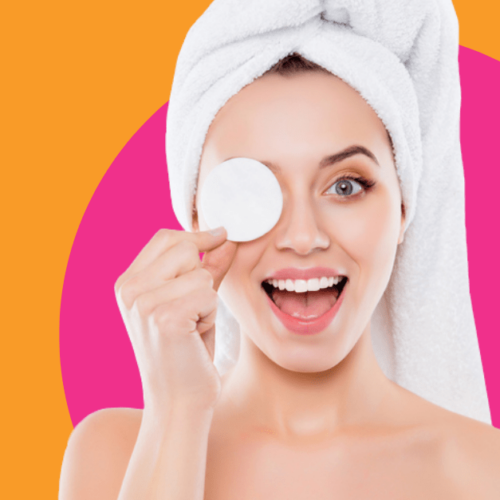

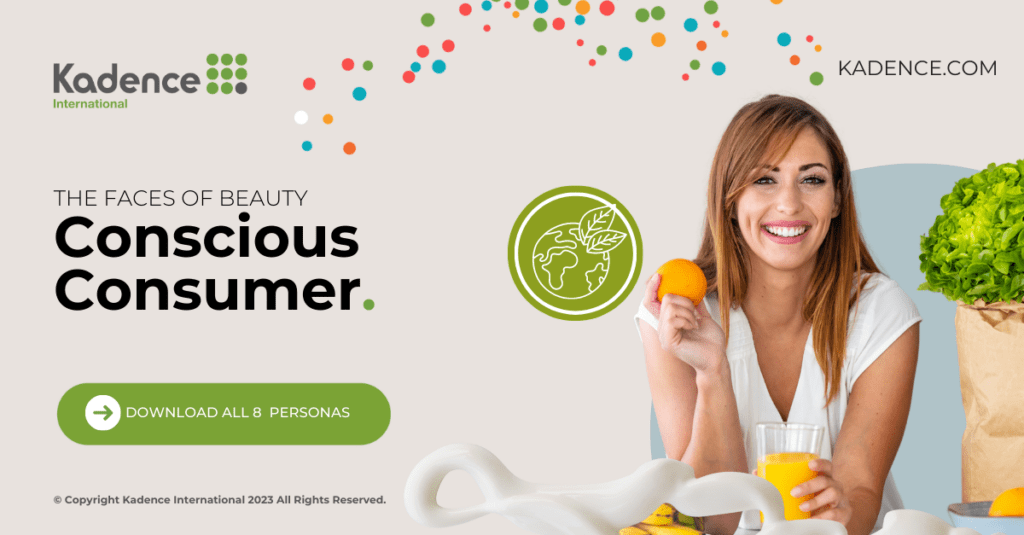
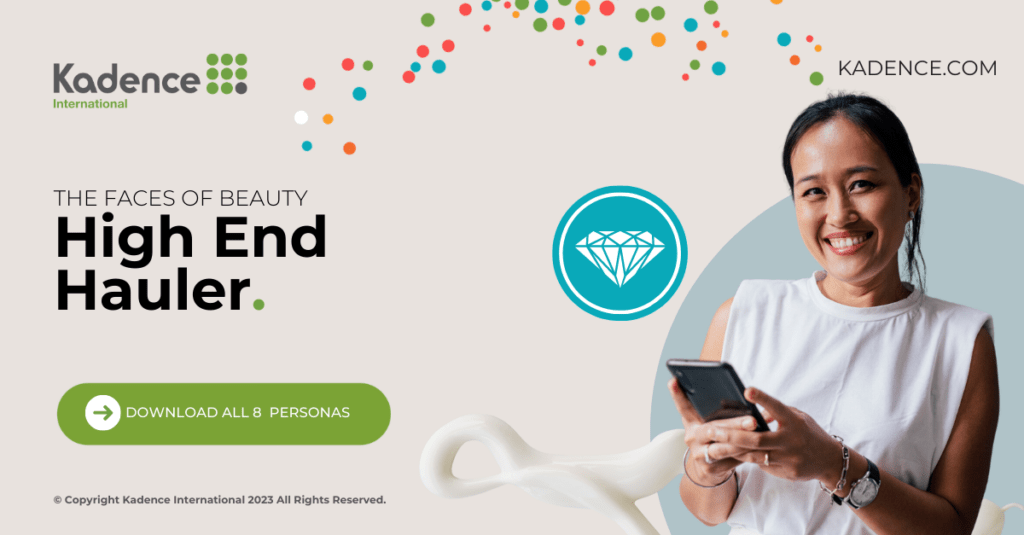

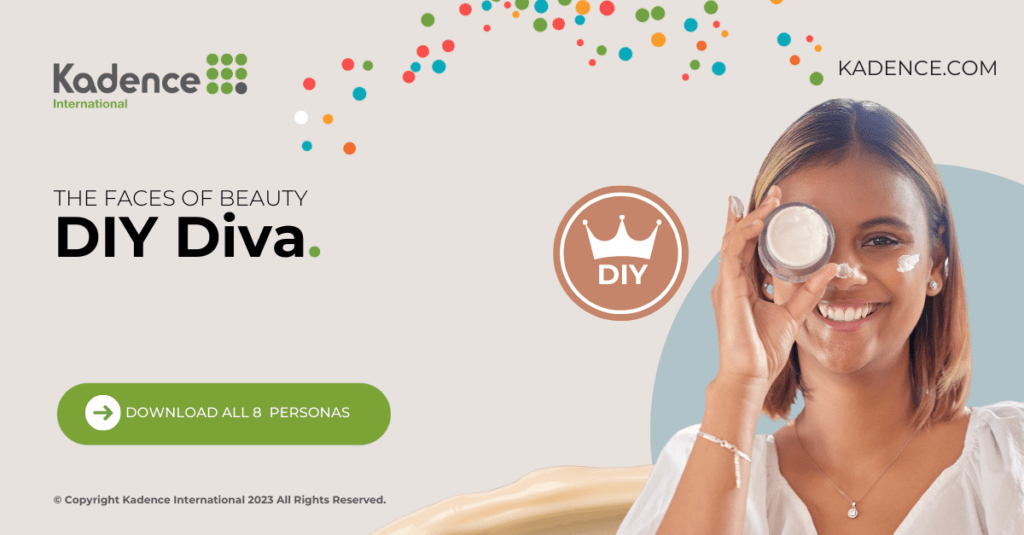
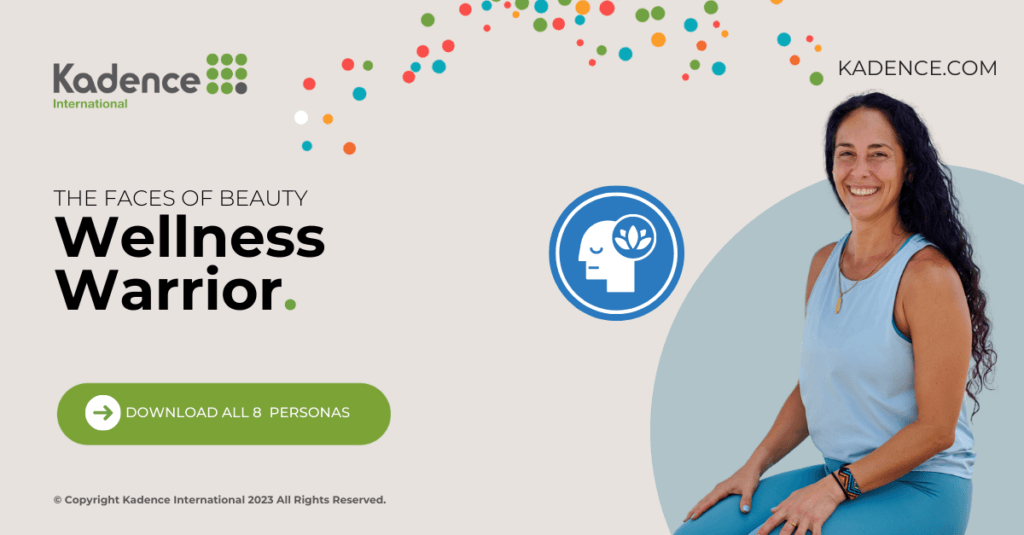
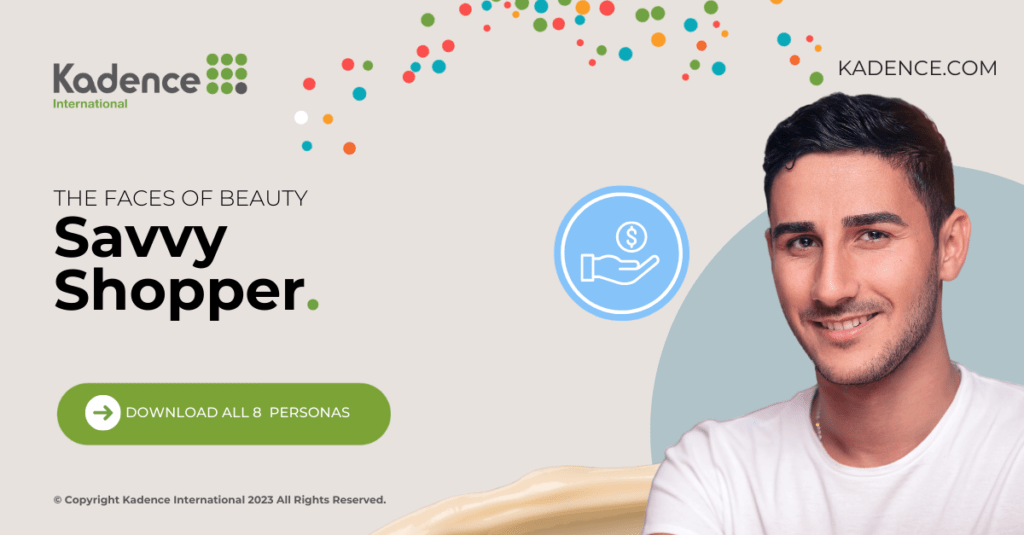

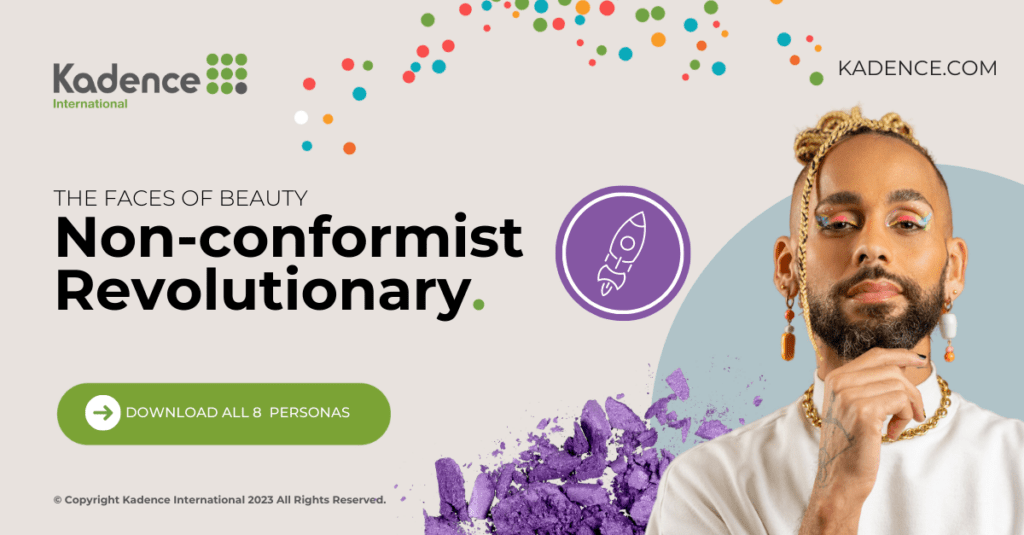

 Senior Marketing Executive
Senior Marketing Executive Sales & Marketing
Sales & Marketing General Manager PR -Internal Communications & Government Affairs
General Manager PR -Internal Communications & Government Affairs Vital Strategies
Vital Strategies
 Customer Intelligence Director
Customer Intelligence Director